Mongols in Russia. 1238 Campaign of the Year
Having learned about the tragic events in the neighboring Ryazan principality, the Grand Duke of Vladimir Yuri Vsevolodovich divided his troops into three parts.
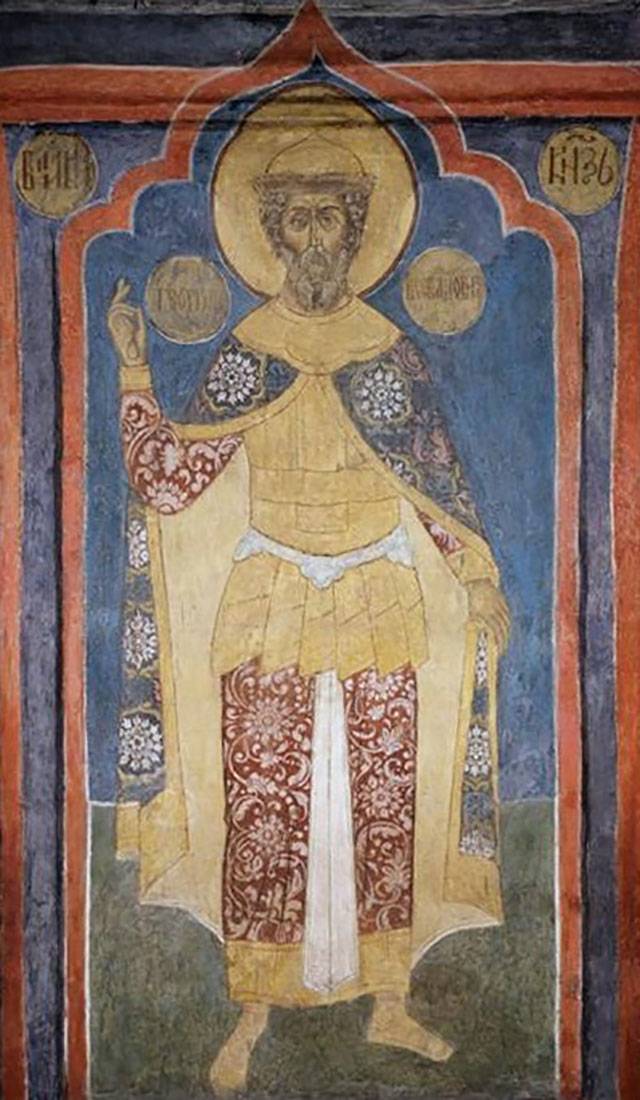
With a part of his squad, he went to the Volga forests, to the River City, hoping that the squads of Yaroslavl, Rostov, Uglich and Novgorod would join him there. The second detachment was left by him in the capital, the third, which was headed by the son of the Grand Duke Vsevolod and voivode Yeremey Glebovich, was sent to Kolomna, the last Ryazan city, which still closed the path to his lands to the Mongols.
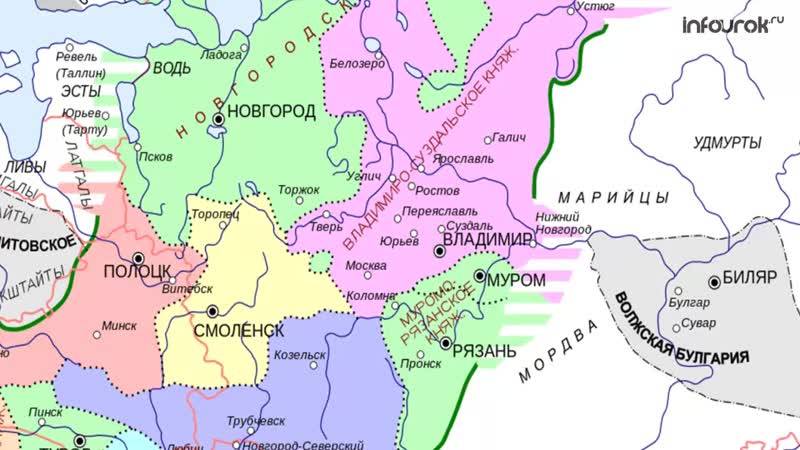
The battle of Kolomna and the fall of this city
With the remnants of the Ryazan army, there was the son of the deceased Yuri Ingvarevich - Roman. But for the Vladimir prince, this was no longer a help to the dying Ryazan principality, but competent actions to protect their lands. Kolomna, where the Moscow River flows into the Oka, has always been a strategically important city, the loss of which opened the way for the Mongols to Vladimir, Suzdal, Moscow, Dmitrov, Yuriev. Later, it was Kolomna that would become the traditional gathering place for Russian troops to repel another Tatar raid.
The battle for Kolomna lasted three days and became the largest field battle of the first campaign of Batu to Russia. Moreover, it was in her that the son of Genghis himself, Kulhan, was mortally wounded: he became the only Genghiside killed during the military campaign for the whole history Mongol conquests. Since the Mongol military leaders never fought in the forefront, but led the battle, being in the rear, they believe that during the battle the Russian heavy cavalry managed to break through the enemy’s battle formations, but, apparently, was surrounded and destroyed. After this battle, the Mongols besieged Kolomna for another three days.
From the Russian side, Ryazan Prince Roman Yurievich and Vladimir Voivode Yeremey died in this battle. Rashid ad Din reports:
Vsevolod Yurievich managed to break into Vladimir, where he died during the siege of this city by the Mongols - February 7, along with his mother and brother Mstislav.
During the siege of Vladimir, part of the Mongol army moved to Suzdal. The city squad met the Mongols at the Big Settlement, where the village of Yakimanskoye is now located, and was defeated there. The remaining defenseless city was stormed.
[c
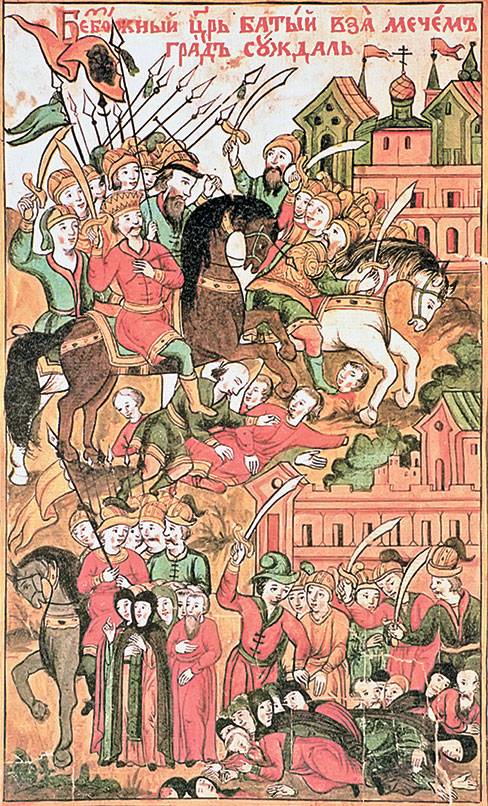
From Vladimir to Torzhok
After that, part of the Mongolian army, headed by Batu Khan and Subedai, went to Torzhok, capturing Yuriev, Pereyaslavl, Dmitrov, Volok Lamsky and Tver along the way. (That year, in addition to the cities mentioned hereafter in the article, Yuryev-Polsky, Starodub-on-Klyazma, Galich-Mersky, Yaroslavl, Uglich, Kashin, Ksnyatin, Dmitrov fell under the blows of the Mongols.)
The siege of Torzhok began on February 21 and lasted 2 weeks. In the Novgorod First Annals, this is how it is said:
And these are the lines of the Tver Chronicle:
The Mongols traveled some more distance towards Novgorod, but from the Ignach Cross (this could be a crossroads, or actually a cross by the road) they turned back.
In 2003, in the Novgorod region near the Polet river near the village of Yazhelbitsy, a memorial sign was erected in honor of this event:
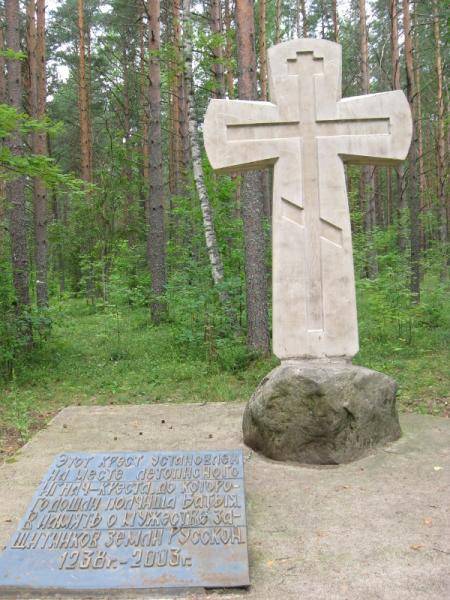
Other Mongol detachments moved in search of the Grand Duke - to Yaroslavl, Gorodets and Rostov.
Yuri Vsevolodovich by the river Sit
And the Grand Duke Yuri Vsevolodovich at that time gathered his troops near Sitya.
Now this river, on the banks of which in March 1238 of the year one of the most terrible and tragic battles of the Batyev invasion took place, flows through the territories of the Tver and Yaroslavl regions. Previously, it was the right tributary of the Mologa, now it flows into the Rybinsk reservoir.
At present, it has become very shallow, and it is hard to believe that in March 1238, many Russian soldiers drowned in it.
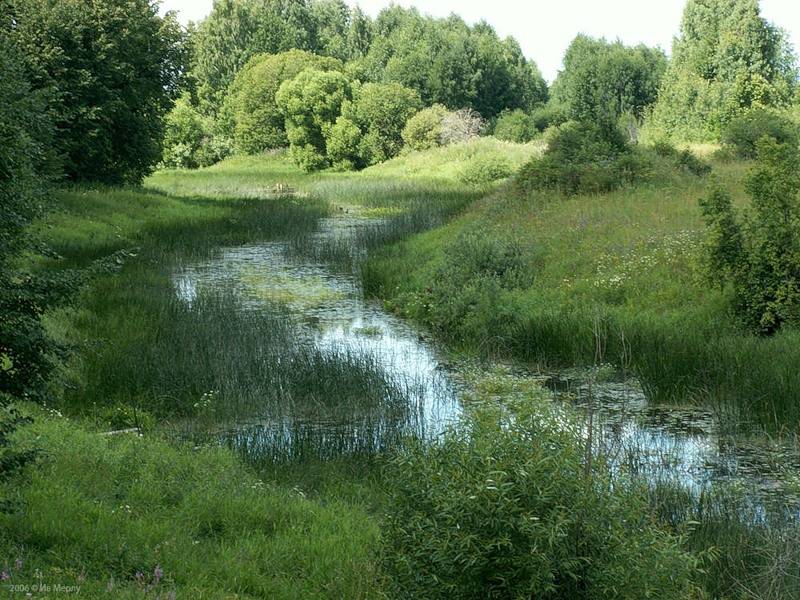
Here Yuri Vsevolodovich stopped, waiting for the retinue of brothers and nephews.
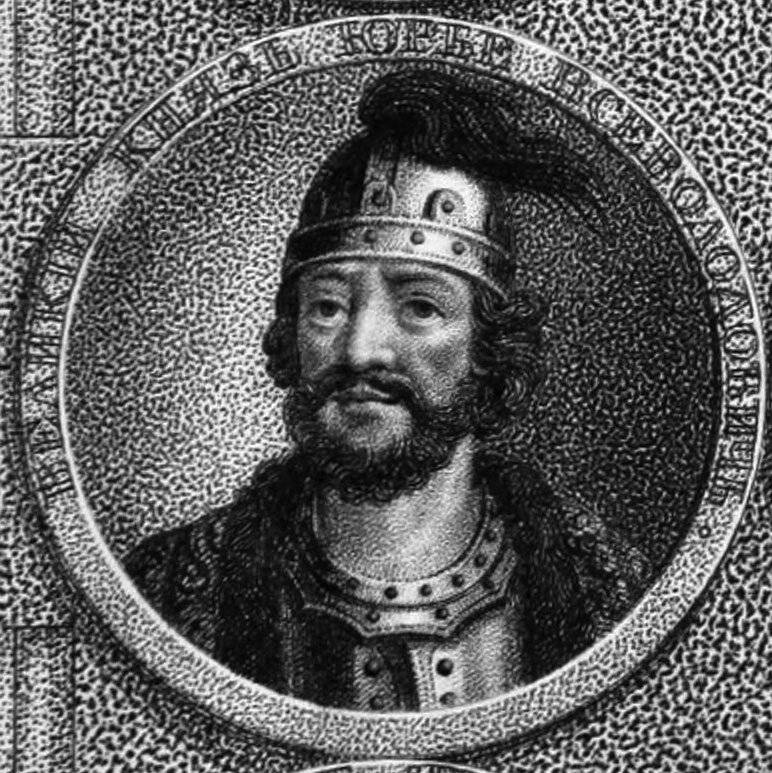
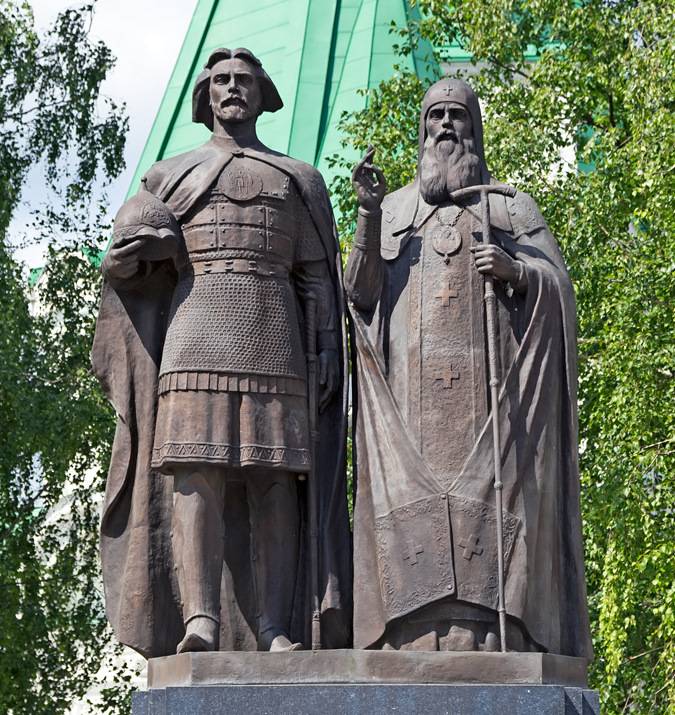
His brother Yaroslav, who had ruled in Kiev since the 1236 of the year, also controlling Novgorod (where his son Alexander was now) and Pereyaslavl-Zalessky, did not come to the rescue. Considering what happened on the shores of the City, this was probably for the better: the Russian squads did not die here because of their small numbers, and the presence of another detachment would hardly have changed anything.
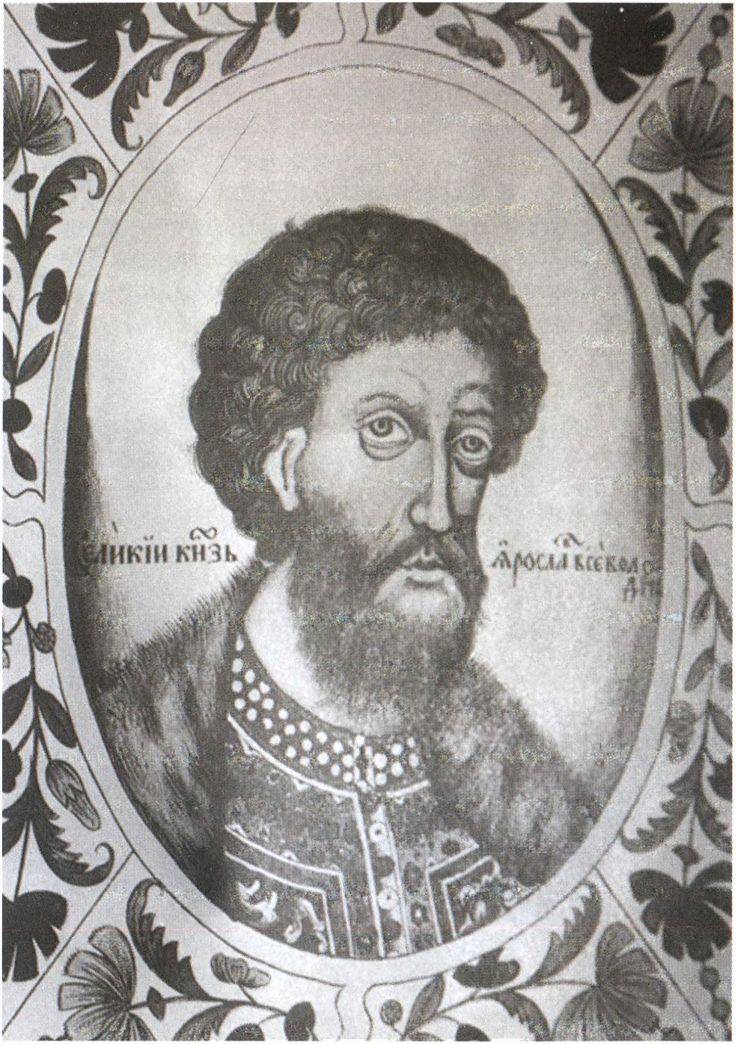
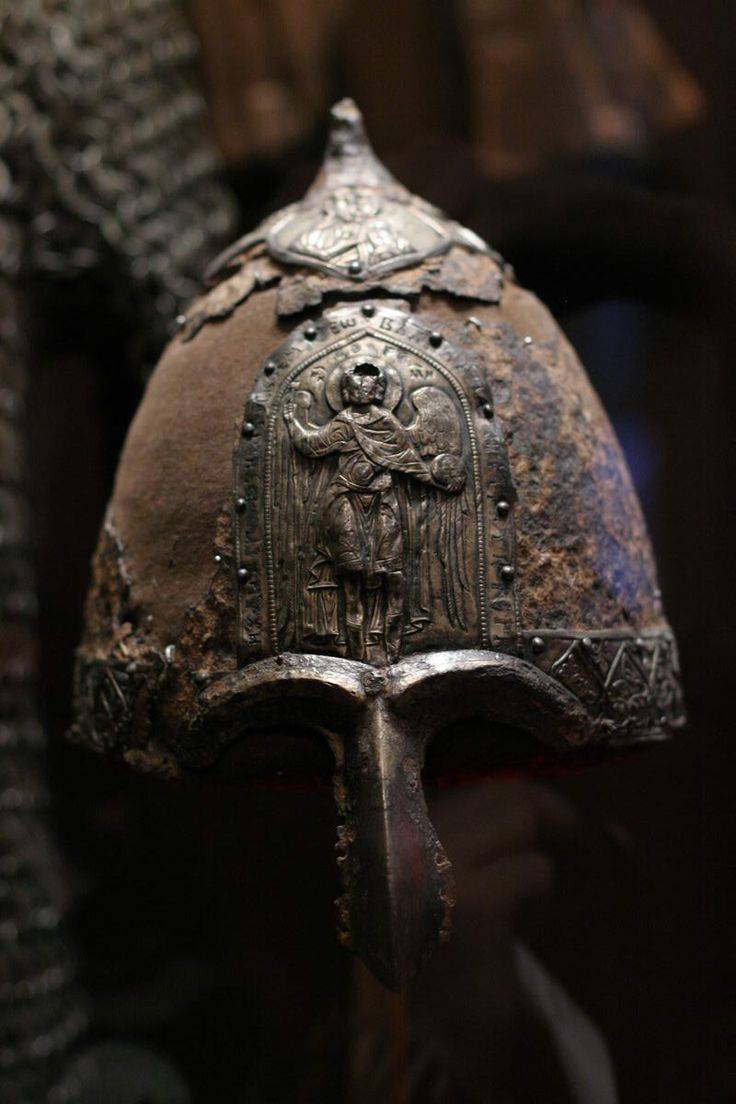
Four princes brought their soldiers - the brother of Yuri Svyatoslav and his nephews Vasilko, Vsevolod and Vladimir.
Historians still argue about the gathering place and camp of this rather large army (as well as the place of battle). Some believe that it was the headwaters of the Cit River, others claim that everything happened near its mouth, while others are convinced that Russian troops were stationed in several camps along the entire length of the river. As a result, commemorative signs in honor of this tragic battle were erected in two regions - Yaroslavl (Neruz district) and Tver (Sonkovsky district).
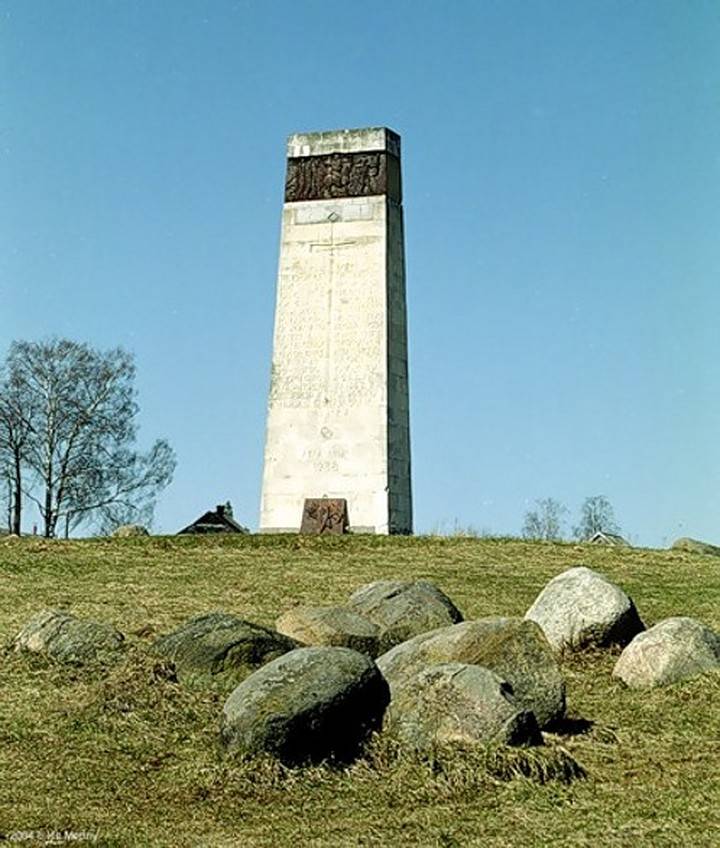
Most historians are still inclined to believe that Russian troops were forced to stretch from the mouth of the City to the village of Bozhonki. It was almost impossible to set up one large camp because of the lack of the necessary space and the difficulty in organizing its supply. Therefore, part of the detachments stood in the surrounding villages, part - in the field - a narrow strip for over 20 kilometers. On the eastern bank, which was considered the safest, between the villages of Semenovskoye and Krasnoye, the Spare Regiment was set up, which could be sent to help both to the center of Russian positions and to the north.
There is no agreement on the date of this battle. The official date is March 4 1238 of the year. But some researchers are sure that it happened on the 1 of March, or on the 2 of the same month.
It is believed that the battle here, as such, was not. Indeed, in European and Persian chronicles of the XIII-XIV centuries, only a sudden attack of the Mongol detachment on the camp of Yuri Vsevolodovich, ending in the death of the Grand Duke, is reported. And his soldiers, in this case, apparently randomly retreated, becoming easy prey for the Tatars pursuing them.
The Novgorod First Chronicle speaks of the same thing:
The death of the Grand Duke in this source is said mysteriously and vaguely:
The author of the Tver Chronicle also leaves the answer:
M. D. Priselkov (Dean of the Faculty of Social Sciences of Petrograd University, and then Dean of the History Department of Leningrad University), for some reason believed that Yuri Vsevolodovich could be killed by his people when he tried to stop the running soldiers.
In general, despite many sources, the Battle of Sith remains one of the most mysterious battles of that time.
The mysterious commander of the Mongols
On the way to the City, the Mongols took Rostov, Yaroslavl, Uglich, Vologda and Galich-Mer. Who led their troops in this movement towards the City and in the battle itself? In the Ipatiev Chronicle it is reported that it was Burundai - the main commander of Batu Khan after Subaedei returned to Mongolia (there Subedei will also die in 1248). The Mongols themselves said that Burundai “has no pity, but only cruelty and honor”. He enjoyed great authority both among Batu Khan and among the Russian princes, who turned to him with requests to resolve their disputes.
However, the Ipatiev Chronicle also claims that Yuri Vsevolodovich died not in the City, but in Vladimir, which is absolutely wrong.
But other sources (including Mongolian) do not report anything about the participation of Burundai in the first campaigns of Batu Khan. Some researchers consider the instructions of the Ipatiev Chronicle about the victory of Burundai in the Battle of Sith and its participation in the siege of Kiev in 1240 as later inserts. In this case, for the first time in Russia, this commander found himself during a punitive campaign against Daniil Galitsky - in 1259-1260.
But who then could command this part of the Mongolian army?
The “Secret Legend of the Mongols” says that the Great Khan Ogedei, having received news of a quarrel at a banquet, where his son Guyuk and granddaughter of Buri insulted Batu Khan (this was described in the article Mongols in Russia. First strike), angrily says:
From this passage it becomes clear who, in fact, had true power over the army in the Western campaign of the Mongols: the first was named Subudey, the second - Buzheg (Buzhek), the grandson of Genghis Khan, the son of Toluy. Perhaps it was he who was the commander who defeated the Russian troops in the City.
Battle of the City
The beginning of the battle, many now propose to date the 2 of March to the 1238 of the year, and the 4 of March to be considered the end date of the battle, when the Russian troops opposing the Mongols were completely destroyed.
The main mystery of the Battle of Sith is the unexpected appearance of the Mongols. Apparently, only the guard regiment, which was headed by governor Dorozh, was in relative combat readiness then. But here, the Russian troops were taken by surprise: the Mongol strike led to a panic and complete disorganization of separately standing units, many of which did not even have time to line up for battle.
There was probably no classic “right battle” in the Sith battle: there were numerous clashes between the Mongols and scattered Russian troops and their subsequent pursuit. Moreover, blows, according to many historians, were inflicted in at least three places.
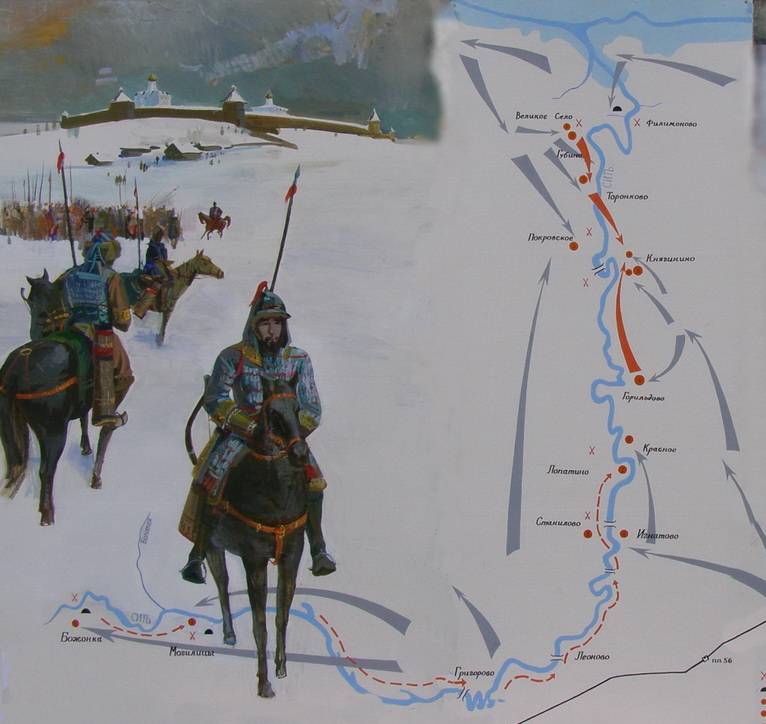
The first episode was the battle of the Watchtower Regiment, it could happen near the villages of Mogilitsa and Bozhonka - in the upper reaches of the City River. It is believed that this regiment was attacked at night.
The Trinity Chronicle says:
That is, the Mongols came from two sides - from Koya (which came as a surprise to the Russian commanders), and from Bezhetsk (from where the Russian military leaders expected them).
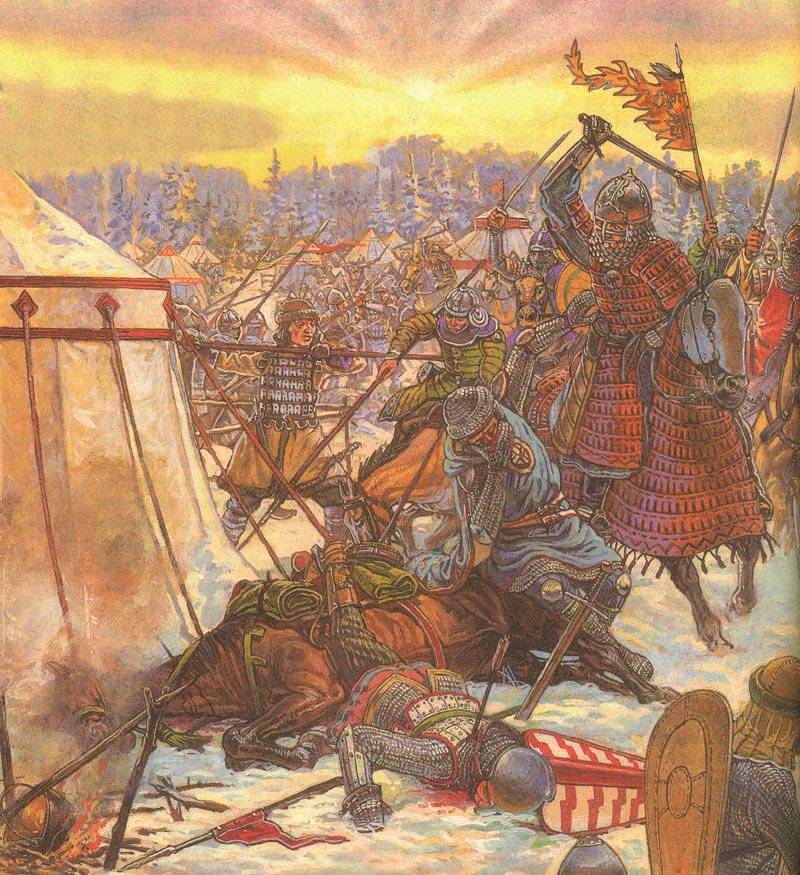
The second episode is an attack on the units in the center, headed by Prince Yuri Vsevolodovich himself: near the villages of Stanilovo, Yuryevskaya, Ignatovo and Krasnoe. It is believed that the Russian regiments were completely destroyed here. Some sources report that the Russians were driven out to the ice of the City and drowned, there were so many corpses that the bodies blocked the river - the nearby inhabitants for a long time called this place "rafts". Sometimes you can read that the severed head of Yuri Vsevolodovich was sent to Batu Khan.
The Tver Chronicle says:
But in the I Sofia Chronicle you can read:
This was reported in the Simeon Chronicle. But, in this case, it is not clear who and why cut off the head of the Grand Duke.
In the third episode, the regiment of the right hand and the ambush regiment took part - this could happen in the area of the villages of Semenovskoye, Ignatovo and Pokrovskoye.
From here the Russians fled north, the Mongols drove the retreating for many kilometers.
The result of this battle was a catastrophic defeat of the Russian squads. In addition to Grand Duke Yuri Vsevolodovich, Yaroslavl Prince Vsevolod Konstantinovich and Vladimir governor Zhiroslav Mikhailovich died in it. Prince Vasilko of Rostov was captured. It is alleged that he was killed after he refused to change his faith and go to the Mongols to serve.
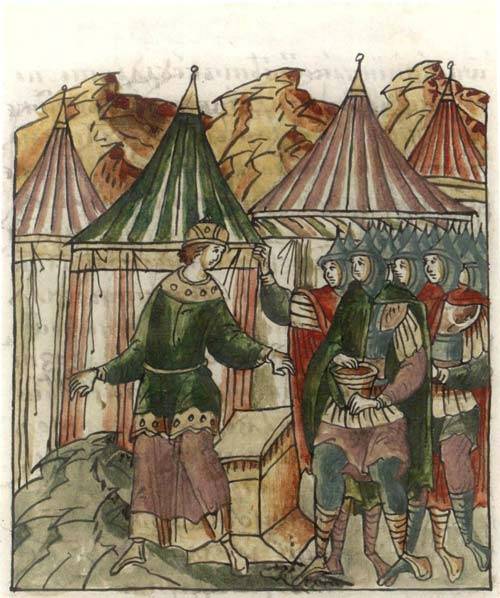
Later, his body was found in the Shernsky forest and buried in the Rostov Assumption Cathedral.
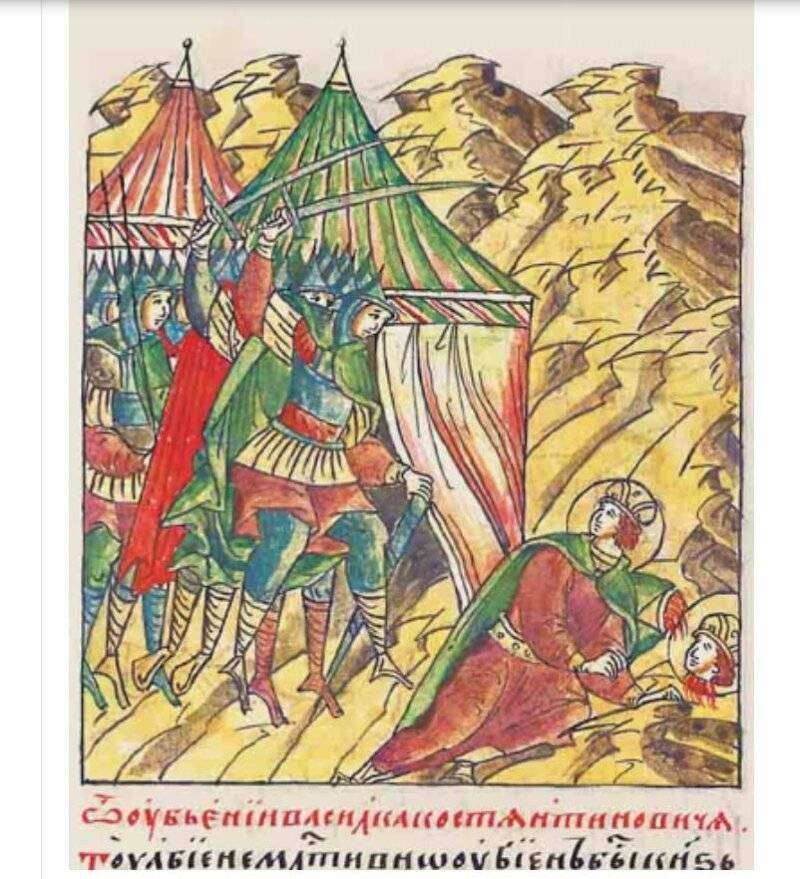
The story about the requirement of the Mongols to change their faith raises great doubts, since they were not engaged in missionary activity in the conquered territories. But their proposal to switch to the service seems quite reliable: the Mongols always took part of the soldiers of the defeated side to participate in subsequent military campaigns, and Prince Vasilko could become the commander of the Russian allied units. The participation of Russian soldiers in the European campaign of the Mongols is confirmed by both European and Eastern authors. So, in the "Great Chronicle" of Matthew of Paris, a letter is given of two Hungarian monks, where the Mongol army is said:
In another letter placed in this Chronicle (from the head of the Franciscan order in Cologne), it is reported:
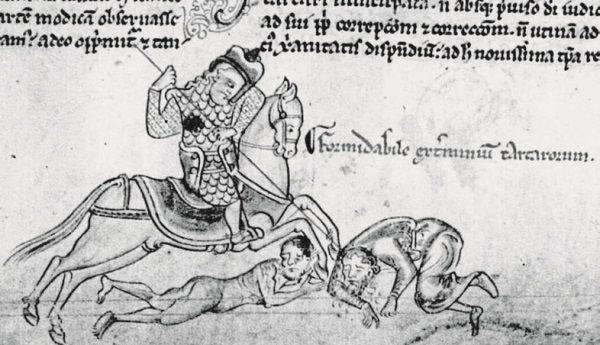
And here is what Rashid ad-Din writes:
The losses of ordinary Russian soldiers in the Battle of Sith were huge, the Rostov Bishop Kirill, already mentioned by us, who visited the battle site on the way from Beloozero to Rostov, saw many unburied and half-corpse animals.
But why was Yuri Vsevolodovich so reckless?
He probably believed that the Mongols who came from the steppes simply could not find his army in the impenetrable Trans-Volga forests.
Indeed, it is difficult to believe that the Mongols, who first appeared in these places, managed to do this on their own. At least numerous and experienced guides were needed. Consequently, the Mongols found allies who not only informed them of the gathering place of the Russian squads, but also led them to the camps of the Vladimir prince. One even had to hear a rather unexpected version that it could have been people who did not come to the city with his brother Yuri Vsevolodovich - Yaroslav, who really wanted to occupy the grand-ducal Vladimir table. He avoided the war with the Mongols, and in the autumn of 1239, he completely became an ally in the war against the Chernigov principality (he captured the city of Kamenets, in which Mikhail Chernigovsky’s family tried to take cover). To document this version at the present time, of course, is impossible.
Some researchers, referring to the Bulgarian sources, argue that the main protagonists of the Battle of Sith were not the Mongols, but the Bulgarian troops that came with them, as well as a number of Nizhny Novgorod soldiers. If you believe these news, you can understand why the "Tatars" were so well oriented in the forest area, and were able to secretly approach and surround the army of Yuri Vsevolodovich.
The riddle of the "Evil City".
In 2009, the small town of Kozelsk (Kaluga Region) was awarded the title “City of Military Glory”. The case is extraordinary and, in its way, unique, because that year marked the 770 anniversary of the semi-legendary events that took place in the 1238 year.
Recall that the army of Batu Khan then allegedly besieged this small and unremarkable fortress for 7 weeks - despite the fact that the entire Mongol campaign in 1237-1238. lasted about five months. For this, it’s as if the Mongols called Kozelsk “The Evil City” (I can Bolgusun).
We must say right away that information about this truly epic siege of a small town (the garrison of which, according to some annals, made up only 300 warriors) immediately causes distrust among any unbiased historian. Because the Mongols knew how to take fortresses. And they proved it perfectly, in the same 1238 year, quite easily and quickly capturing the much larger and more protected Russian cities, in which there were large detachments of professional soldiers. Ryazan fell on the sixth day, Suzdal on the third day, the Mongols approached the capital of North-Eastern Russia Vladimir 3 on February 7 and captured him on February 2. Only Torzhok resisted 7 of the week. And Kozelsk - as many as XNUMX weeks! Why? The answers to this question are striking in their naivety and can satisfy only the inexperienced reader. If you convey the arguments of the supporters of the traditional version in your own words, you get something like the following:
Kozelsk was located on a hill and protected from the east by the Zhizdra River, from the west by Drugusnaya, and in the north, as if, a canal was dug between these rivers. In addition, the city was protected by an earthen rampart and a wooden wall with towers.
And the pictures are drawn accordingly.
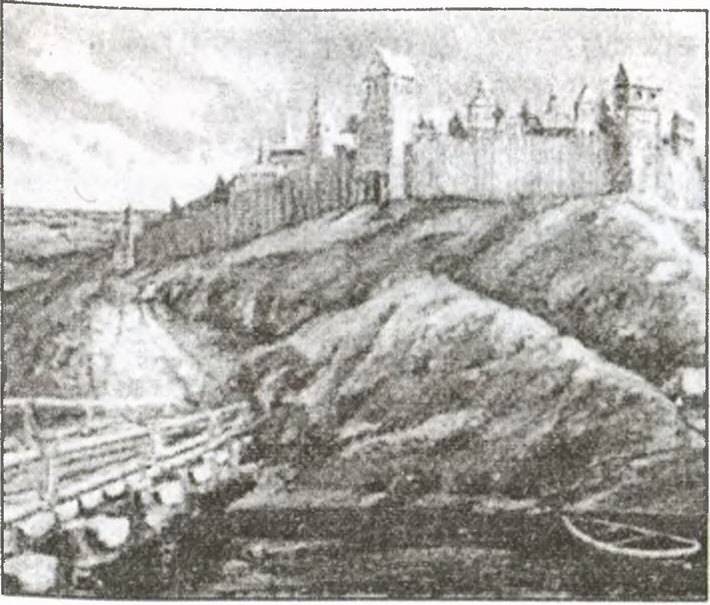
Funny, isn't it? It is unlikely that these simple fortifications could surprise the Mongols who took cities such as Otrar, Gurganj, Merv, Nishapur and Herat.
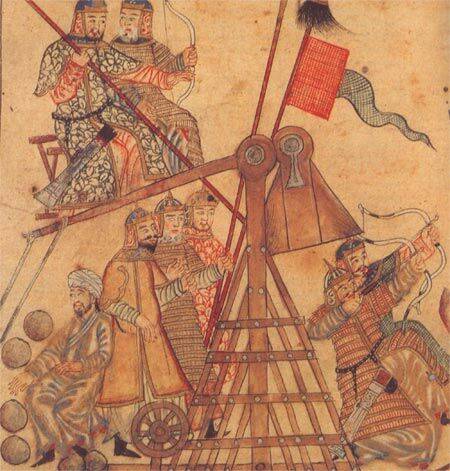
Others say: Batu Khan was stuck near Kozelsk, as he "fell into the trap of spring thaw."
Well, let’s say, but why don’t the Mongols, from nothing to do, immediately take this city? Everything, some kind of "entertainment". And a certain amount of provisions and fodder for the Mongols "stuck in the mud" will also not be superfluous. Why just stand at its walls?
By the way, did you wonder what the Mongols themselves and their horses ate for 7 weeks?
Of course, there are stories about the village of Deshovka, whose inhabitants allegedly supplied the Mongols besieging Kozelsk with provisions, for which they were nicknamed "nasty", and their village received the second name - Pogankino. True, there is another version of the origin of the name of this village recorded in the 19th century: it was as if the Tatars abandoned the "cheap", that is, prisoners of no great value, who later founded this village. And the third version, according to which this village even appeared only in the XVII century.
One way or another, the inhabitants of this village could not feed the army of Batu Khan 7 for weeks, even with a very great desire.
Another question: why did the Mongols really need Kozelsk? What happened in this city? Why did the Mongols need to take it without fail? The Grand Duke did not sit in this city, whose capture (or his death) would certainly affect the degree of resistance of the remaining lands. Kozelsk was not a rich city, the capture of which would more than compensate for the loss of time and human losses. And he was not the last of the unoccupied Russian cities.
Another question: if little Kozelsk defended itself from the Mongols for as long as 7 weeks, what did other Russian princes do at that time? Indeed, during this time they should have been informed that the previously invincible army of Batu Khan stood at a small fortress, unable to take it. This could be explained only by the extreme weakness of the invaders, who, apparently, during the campaign suffered huge, simply critical, losses and are completely bloodless. Why, then, not try to strike from the rear? No, not because the princes that remained unbroken are entirely patriots of Ancient Russia, but with the goal of recapturing the huge booty from the Mongols. Smolensk is very close, and not affected by the invasion. Chernihiv was not hurt at all - and Kozelsk, by the way, is the city of this principality (one can at least somehow explain Mikhail Chernigovsky’s refusal to help Ryazan, but he must defend his own cities). And even the Principality of Vladimir after the defeat on the River Sit is not completely defeated and not broken: the squad of the new Prince Yaroslav Vsevolodovich is intact, and his son Alexander (not yet named Nevsky) is sitting in Novgorod. And, most importantly, if the Mongols really got stuck at Kozelsk, they can now be attacked with almost impunity: other Genghisides, even very angry with the defeat of their comrades-in-arms, in the face of rapidly approaching debauchery, will not be able to return to Smolensk, Chernigov or Vladimir. And maybe they don’t even want to go there: the enemies of Batu Khan - Guyuk and Storms, are likely to be very happy about his defeat. But, no, Russian princes do not go to the aid of the heroic Kozelsk, they do not need neither honor, nor glory, nor fabulous booty.
In general, solid questions that are easier to ask than at least try to answer them.
But some researchers still tried to answer. So, when studying the Bulgarian sources, information was found that the siege of Kozelsk lasted not seven weeks, but seven days, which no longer causes pronounced cognitive dissonance. Of course, there are many days of resistance for this fortress, but there is a version (also Bulgarian) that offers a fairly rational explanation: supposedly, somewhere in the woods near the city, Kozelsk's horse squad was hiding, which made unexpected attacks, attacking the Mongols from the rear. And on the seventh day, the combatants who remained in Kozelsk broke through to meet their comrades, and with them went to Chernigov. And the city, left without defenders, immediately fell. That is, it was not a desperate sortie that ended, according to the official version, with the death of the Kozel squad, but a well-prepared and successful attempt to break through.
This version seems quite plausible, but does not explain the nickname “Evil” given by the Mongols to this city. And it was suggested that Kozelsk’s not fierce and desperate resistance was the reason: for the Mongols, Kozelsk was initially “Evil”, since his current prince, twelve-year-old Vasily, was a grandson of Prince Mstislav - Kozelsky and Chernigov. The one who took part in the murder of the Mongolian ambassadors before the battle on Kalka. It was in order to punish the inhabitants of the "Evil City" that the Mongols lingered at the insignificant Kozelsk. The weak point of this version is the fact that just at that time the Smolensk prince was another participant in this battle - Vsevolod Mstislavich, who, moreover, was also the son of Mstislav Stary, who, along with Mstislav Udatny, decided to kill the ambassadors. But the army of Batu Khan for some reason passed by Smolensk.
In general, historians, apparently, will not solve the riddle of the “Evil City” of Kozelsk soon.
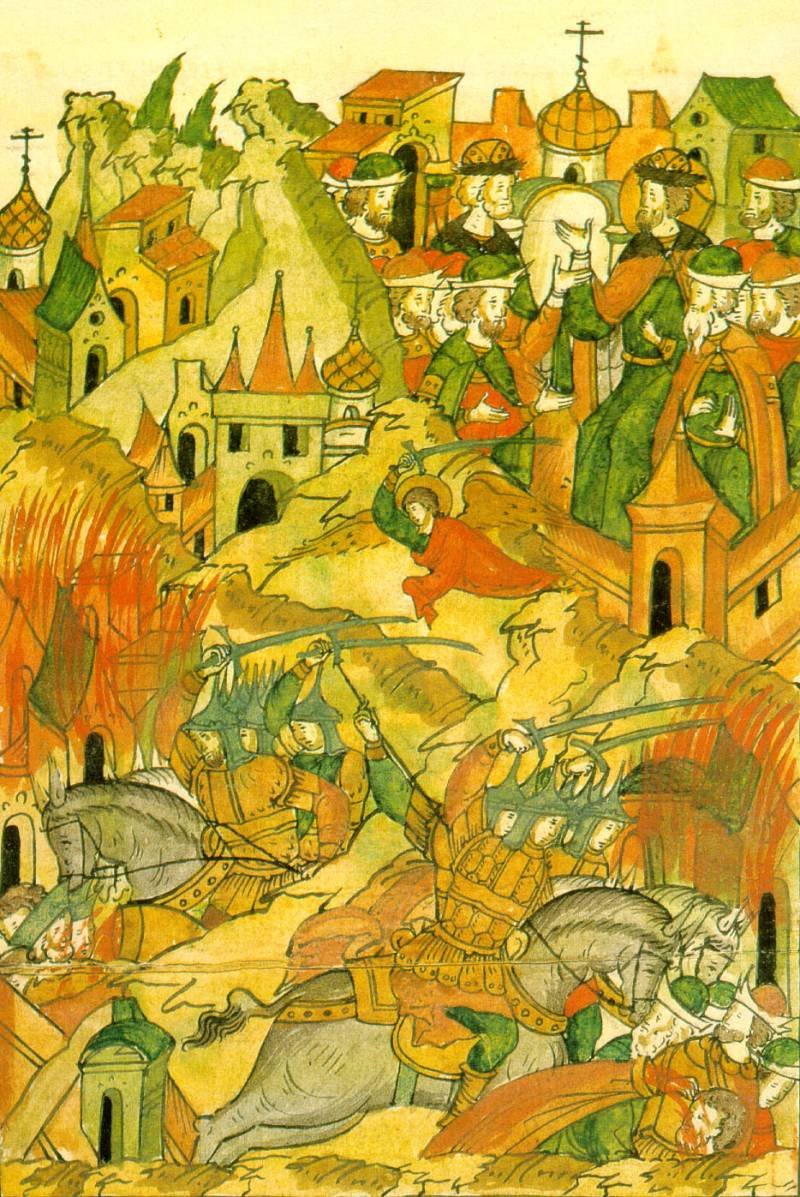
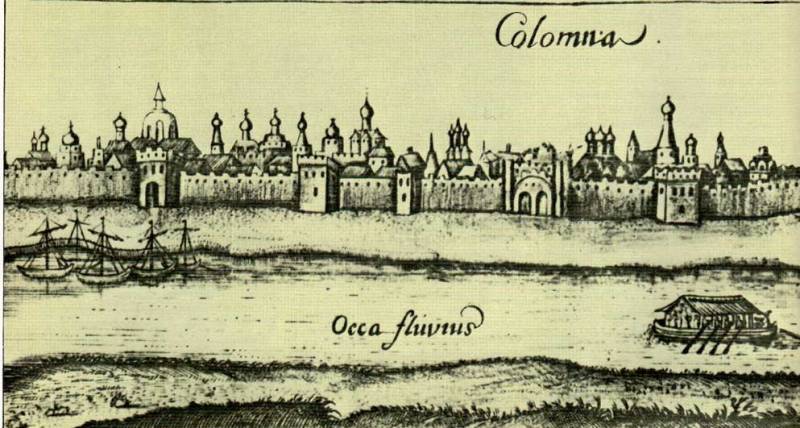
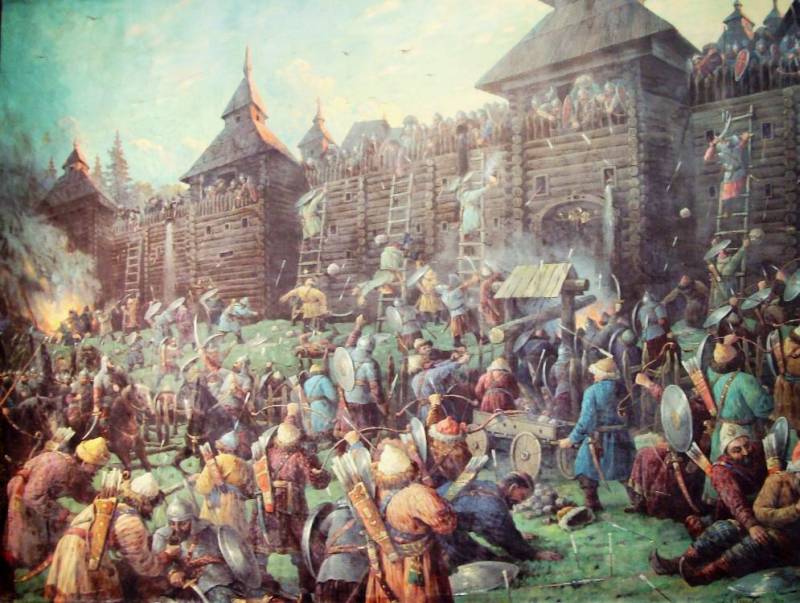
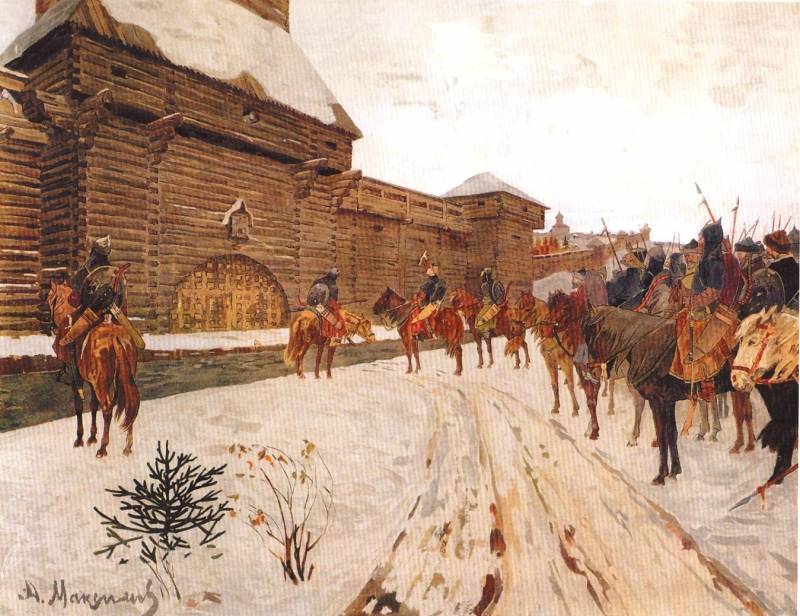
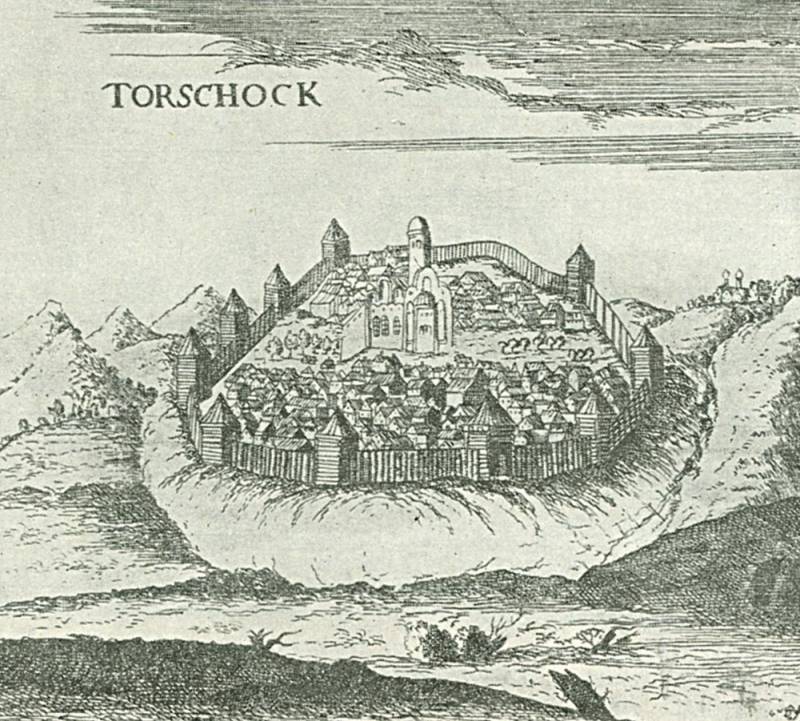
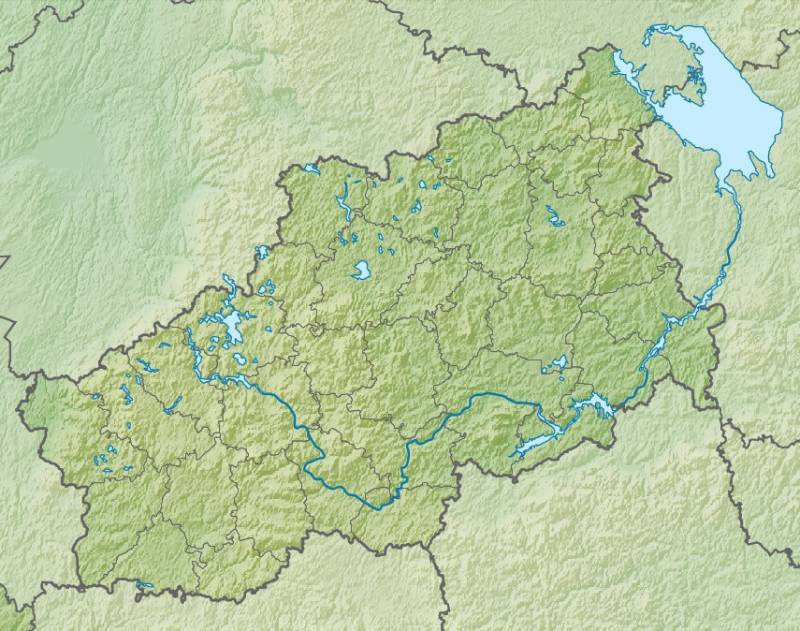
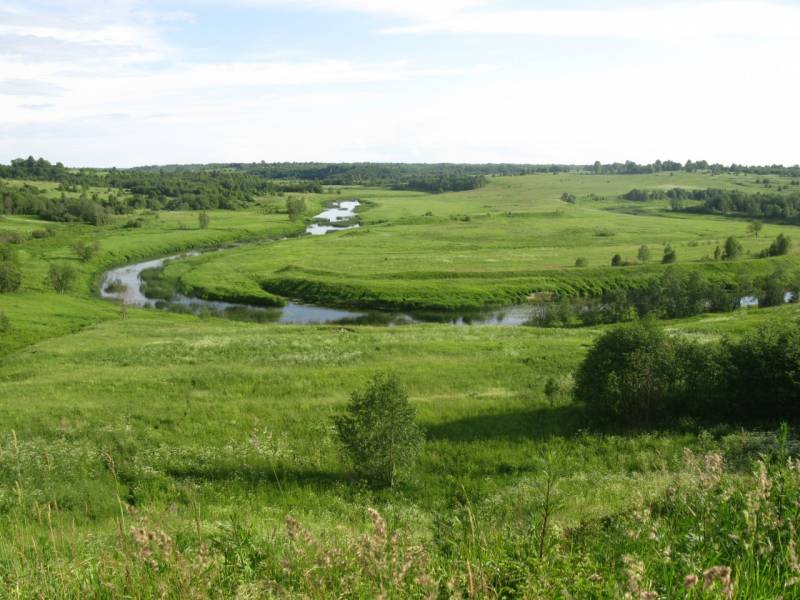
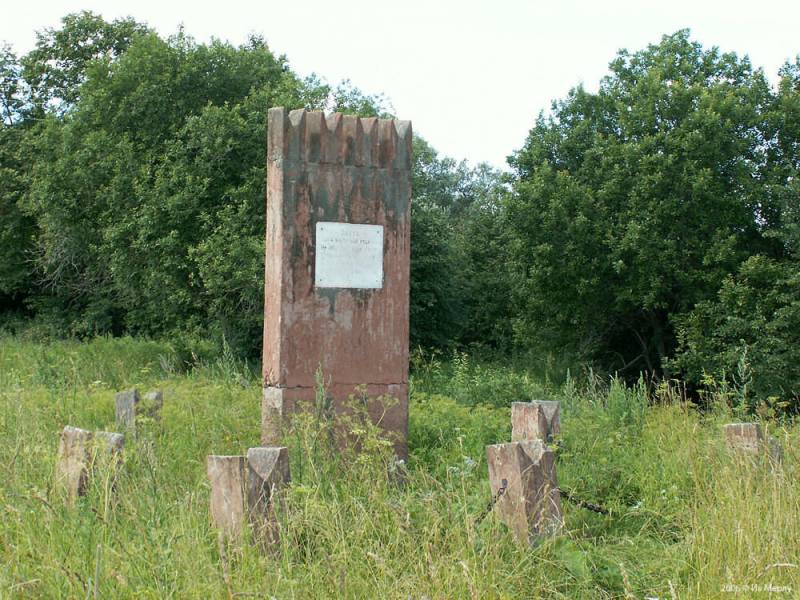
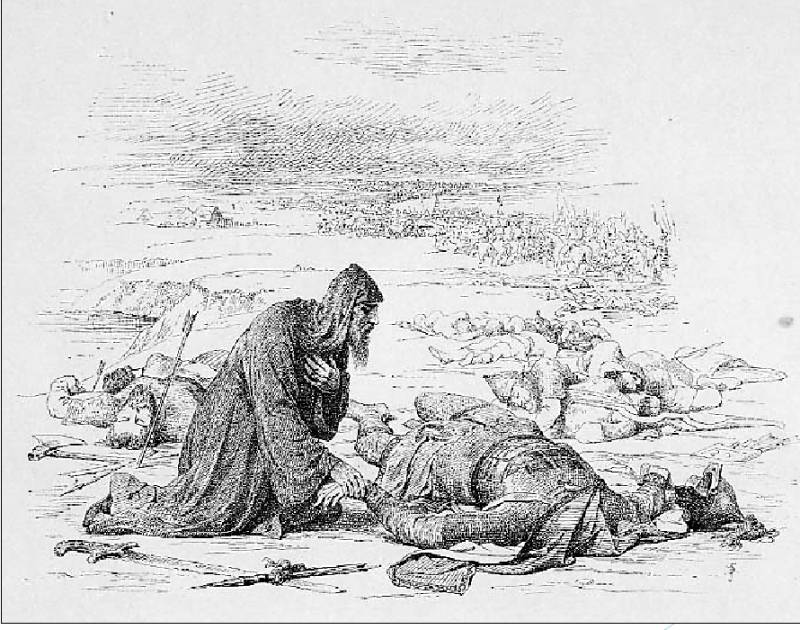
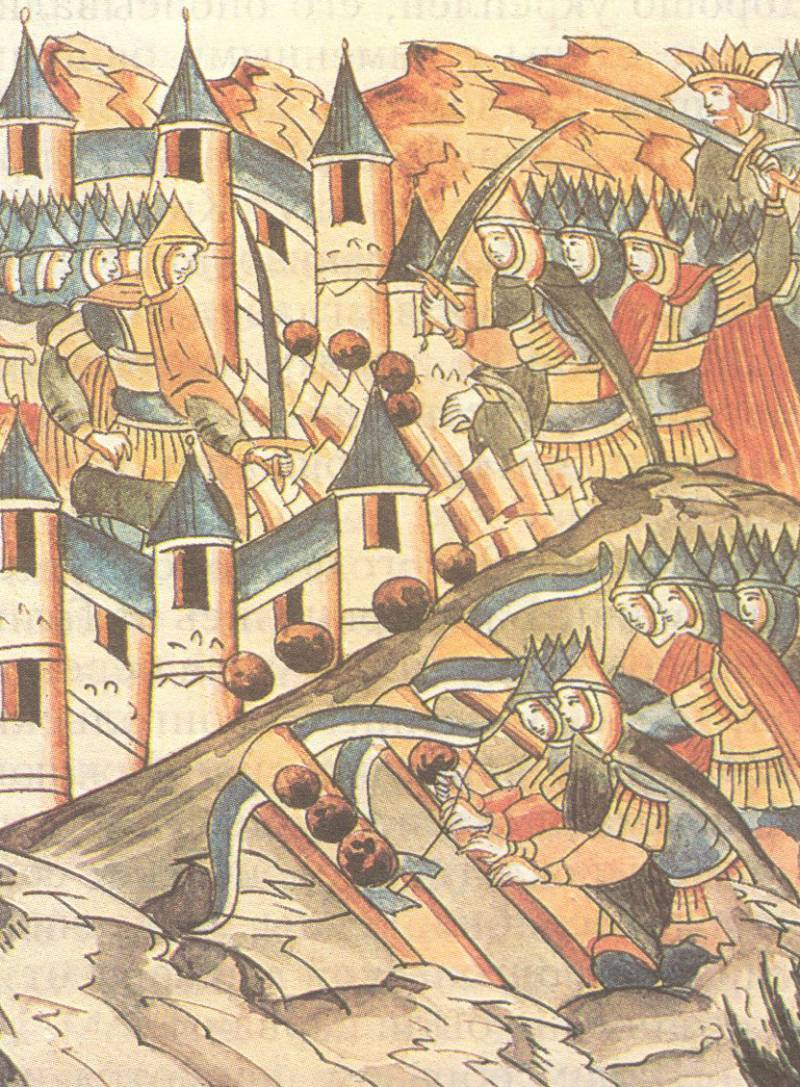
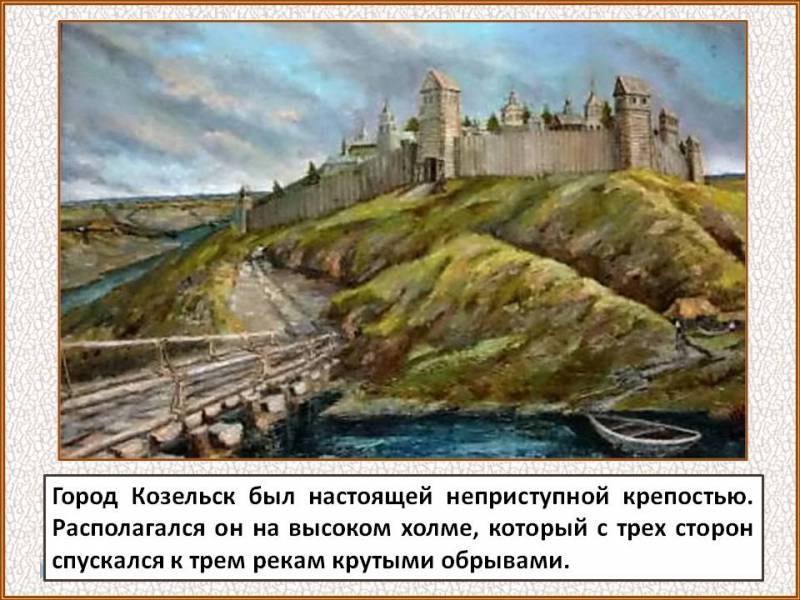
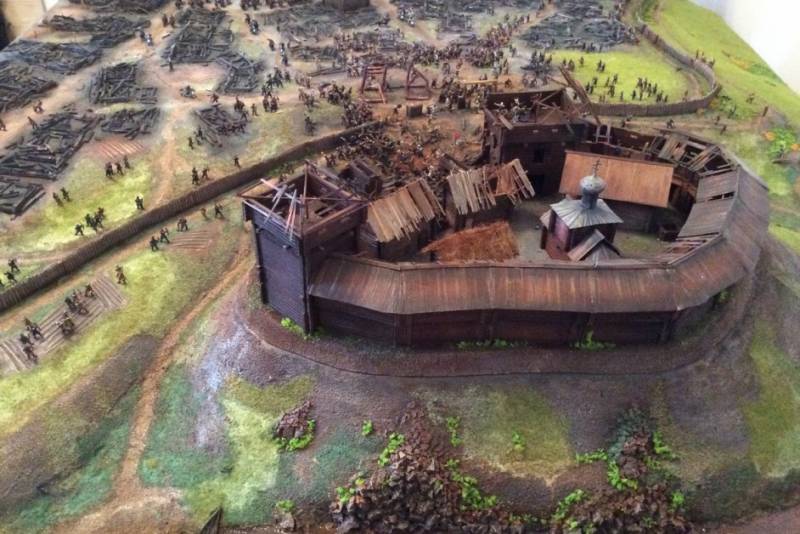
Information